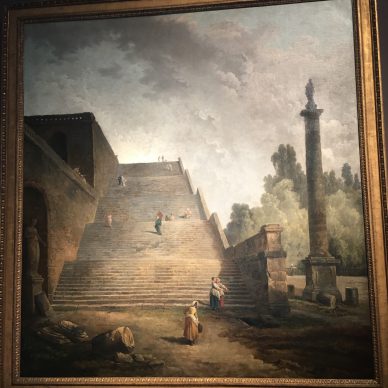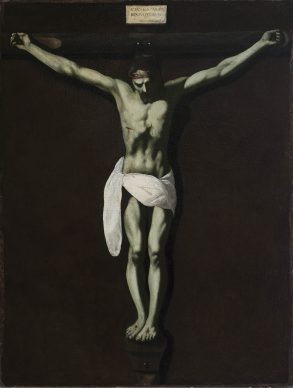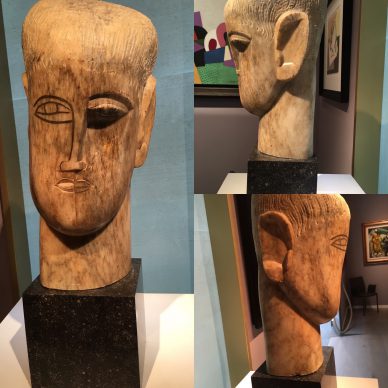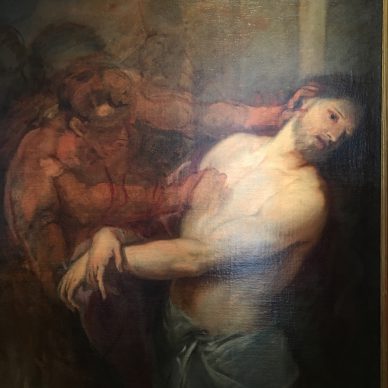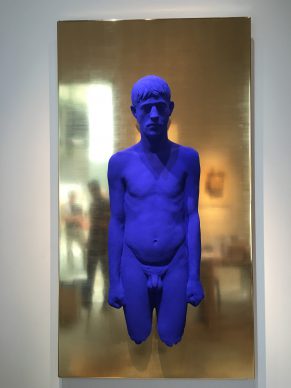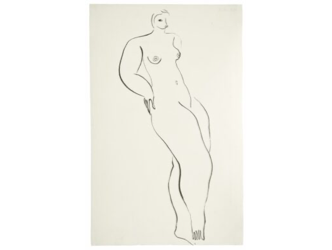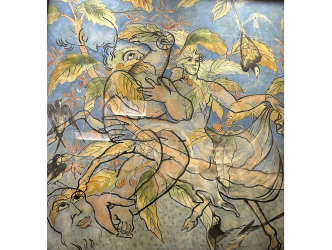“You’ll see how we’re going to reboot the Biennale! My job it to put it back to the level where it should be. After all, we’re in the City of Light. This isn’t taking place in Maastricht. This event needs to rediscover its leadership role.”
Jean-Daniel Compain, who a mere four months ago became the director of the Biennale des Antiquaires, was previously at the helm of, among other things, Fiac.
Under his guidance, some time between now and the end of October, this upmarket antiques salon held at the Grand Palais in Paris and assembling 124 exhibitors should be unveiling a new name to reflect it becoming annual event.
The 2016 edition, which lasts 8 days, is full of surprises and offers high level of quality despite adverse conditions.
It takes place at a time when both the luxury sector and tourism, in Paris have been badly affected by terrorism.
The Biennale has also suffered from strong internal dissent for several years due to the self-interest of a majority of the members of the organisers’ association, le Syndicat National des Antiquaires.
But also the Biennale was conceived and gained its reputation around selling the most exquisite 18th century french furniture. Not only has that niche gone out of fashion, but a racket in fakes dismantled in June of this year succeeded in discrediting it even further.
The Biennale president Dominique Chevalier states, “To protect the general interest in the event, we have decided not to invite the galerie Kraemer and the galerie Didier Aaron, both mentioned in the scandal. We have reinstated the old guard of the veto committee for objects. Everything needs to be rebuilt.”
However, as we’ve come to expect every year, the Biennale has invited a famous architect to attend to the décor of the fair. This time, under the watchful eye of Nathalie Crinière, a specialist in museum exhibition scenography, the Biennale design is particularly well succeeded and in sober taste, with immense grey frames around each stand and optical effects at the entrance.
In fact, the Biennale, known as an international platform for the decorative arts, is increasingly becoming a generalist fair along the lines of Tefaf Maastricht. You can, however, still find stands like the galerie Downtown dealer François Laffanour‘s, which makes an effort to limit itself mostly to unique items of ’40s and ’50s furniture by architects, such as this low table by Charlotte Perriand in the shape of a deltaplane, from 1951, selling for 1.2 million euros.
The fair for old masters, Paris-Tableau, which used to take place each year in November, has merged with the Biennale and offers a high quality selection of work.
Eric Coatalem, for example, has a big and lyric architectural landscape by Hubert Robert (1733-1808), who the Louvre honoured until last may with a retrospective, and which is on sale for 800, 000 euros.
Bob Haboldt exhibits a sombre and beautiful Christ on the cross by the great Spanish master Francisco de Zurbaran (1598-1664) and his studio, on sale for 475,000 euros.
The Swiss gallery De Jonckheere is exhibiting no fewer than nine 16th century paintings by followers of Hieronymus Bosch, who is currently the subject of an exceptional retrospective at the Prado in Madrid. The works are selling for between 250,000 and more than 1 million euros.
In the 20th century category, visitors might be surprised by the inclusion of Opera Gallery, best known for its colourful and decorative pieces.
At the Biennale, however, it is showing works on the secondary market by the classic French abstract painter Pierre Soulages and the Japanese pop artist Yayoi Kusama among others.
It’s also surprising to see the galerie Boulakia, best known for its modern Picasso and Miro paintings, including a gigantic metal candy sweet, a very commercial work by the contemporary French creator Laurence Jenkell.
But we have spare a mention for the graceful sketch of a bathing nude by Edgar Degas. It is being offered by De Bayser, a famous French gallery that specialises in drawings, for 180,000 euros.
The major news in Paris for September is a Magritte exhibition at the Centre Pompidou.
You can, however, see a work by the Belgian surrealist at the Biennale des Antiquaires that was executed relatively early in his career, in 1928. “Le palais de rideaux”, depicting curtains with landscapes concealed in the folds of curtains, is offered by the Belgian gallery De La Béraudière for 4.5 million euros.
That is 3 million euros less than the portrait on the same stand of young woman with a long neck by Amedeo Modigliani completed in 1917.
She evokes the sculptures of goddesses in antiquity, for which the Italian had particularly strong admiration.
In a similar spirit, several spectacular sculptures by the cubist Zadkine are being sold by the Parisian galleries Helène Bailly and Fleury. In plaster, marble, alabaster, wood… A summary of his best work assembled in a place of commerce.
It’s just one of the many good reasons to make it to the Biennale des Antiquaires.
From 10th september to 18th september. Grand Palais. www.biennale-paris.com
Donating=Supporting

Support independent news on art.
Your contribution : Make a monthly commitment to support JBH Reports or a one off contribution as and when you feel like it. Choose the option that suits you best.
Need to cancel a recurring donation? Please go here.
The donation is considered to be a subscription for a fee set by the donor and for a duration also set by the donor.



